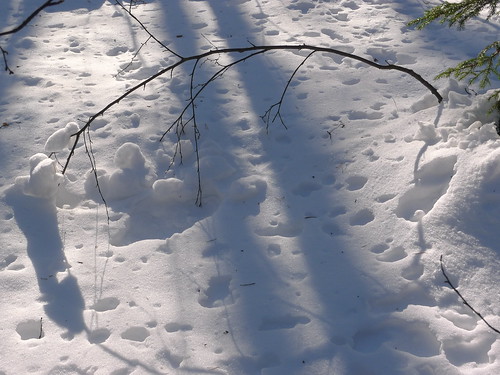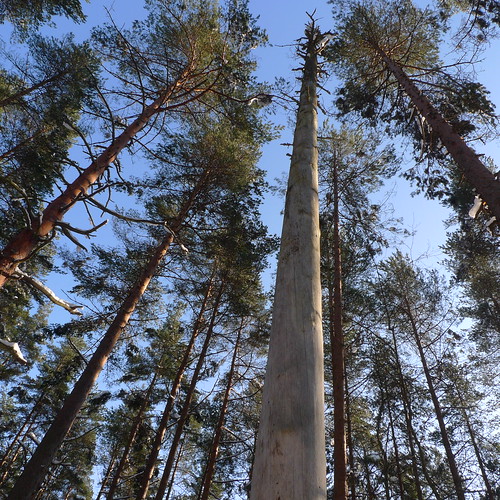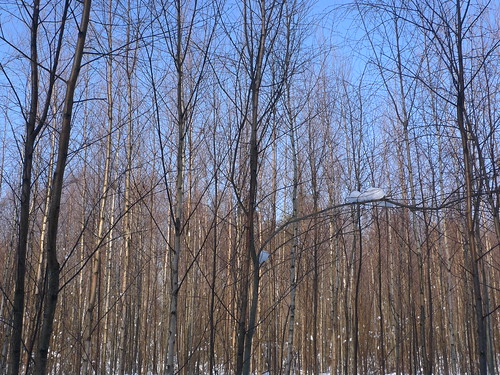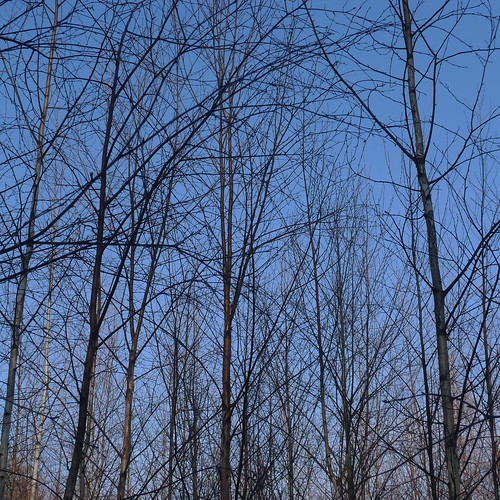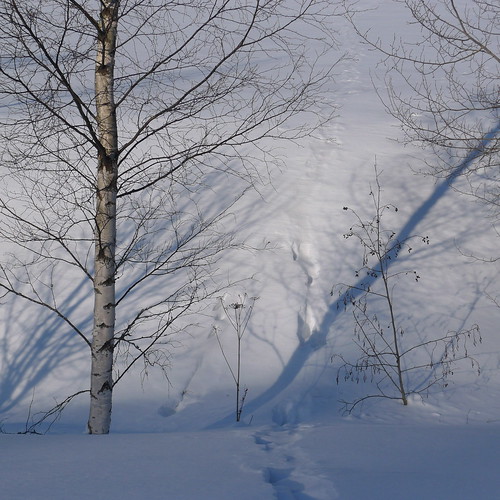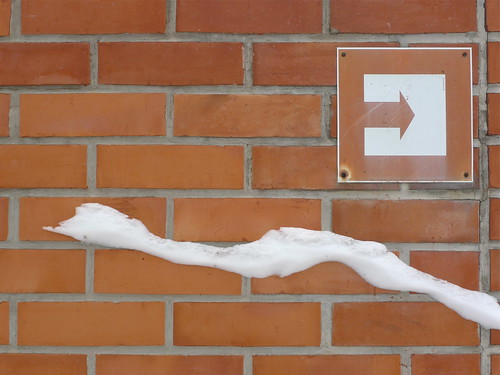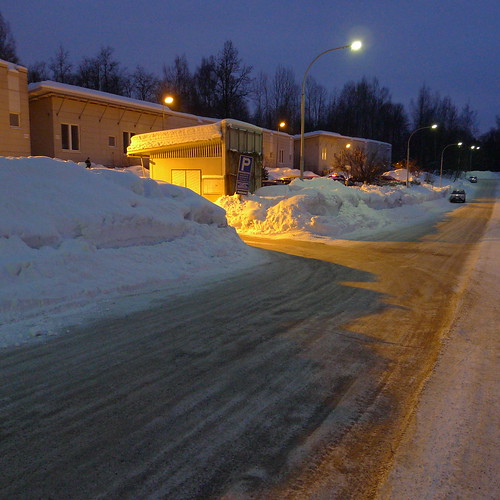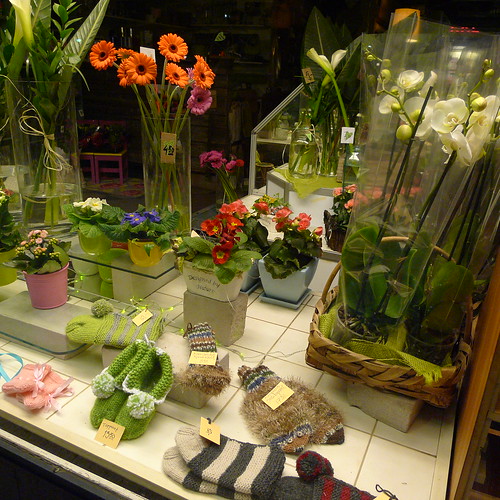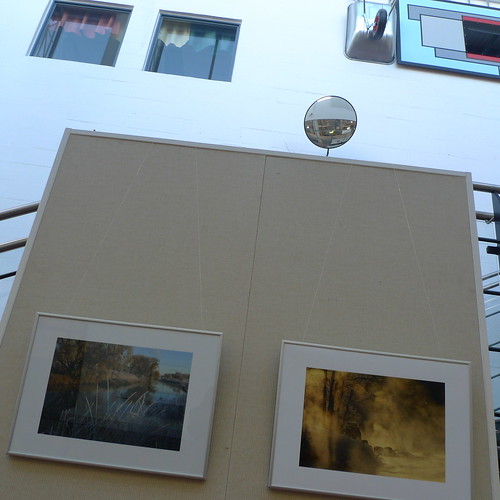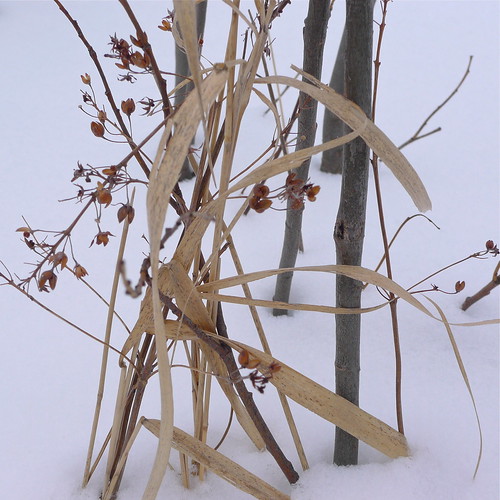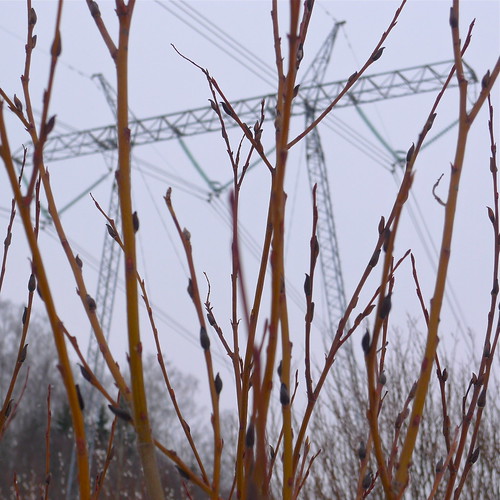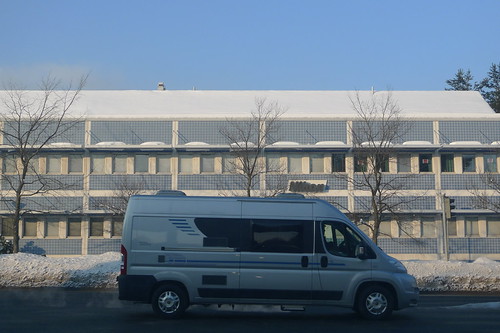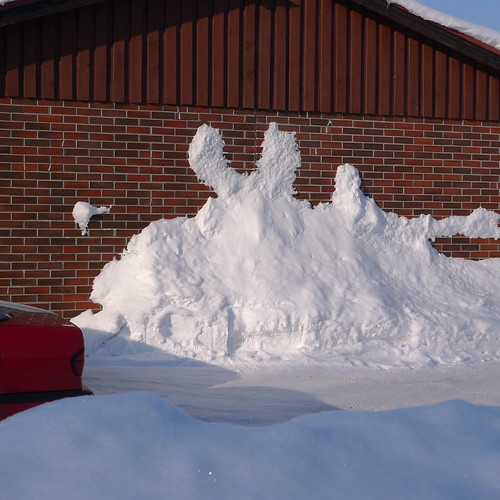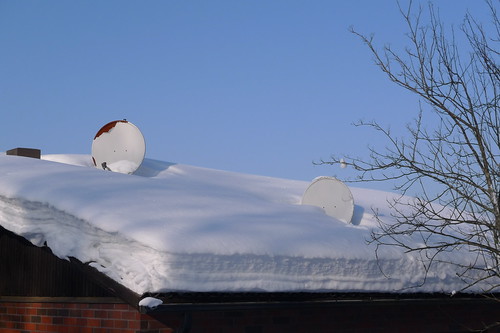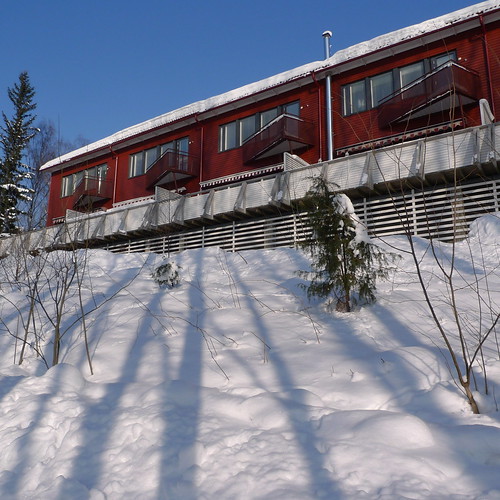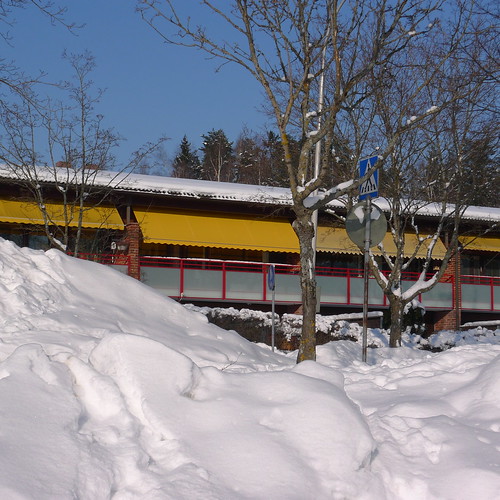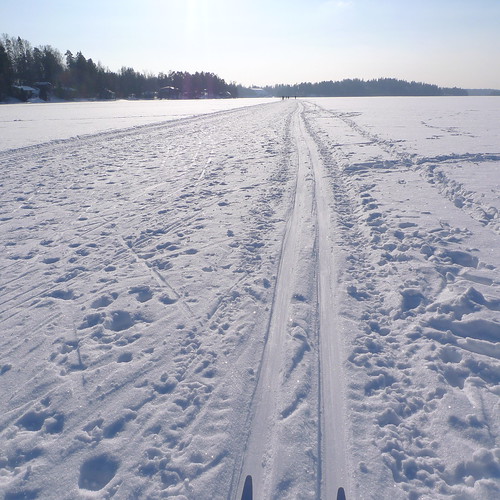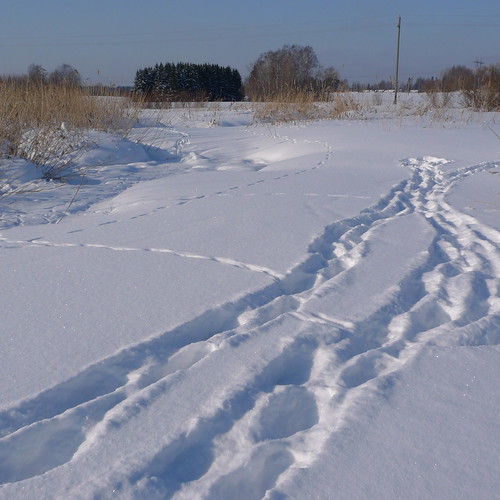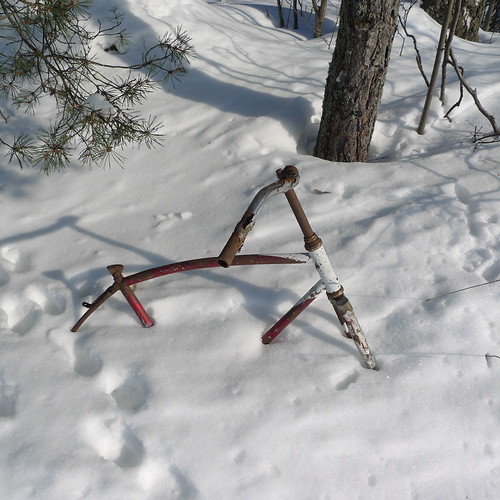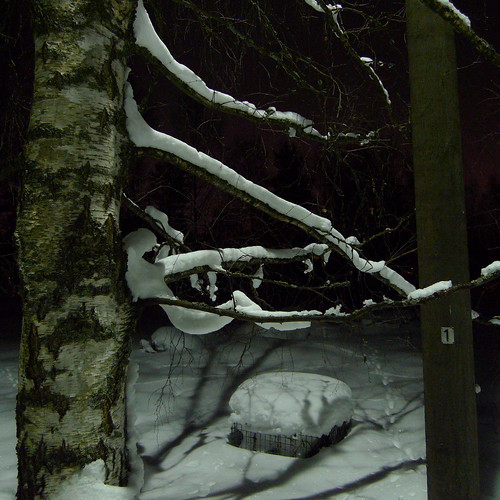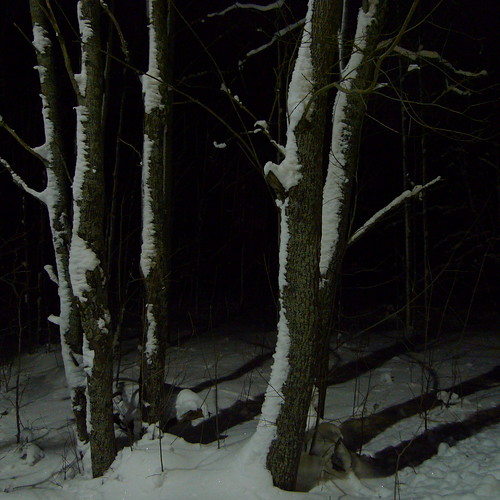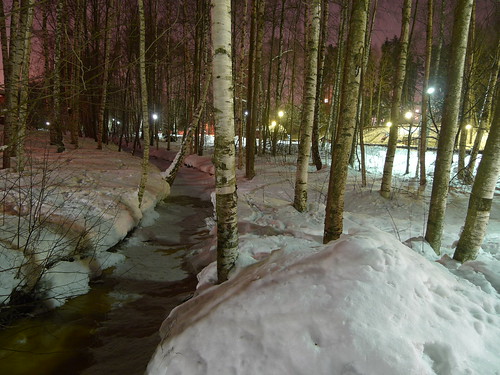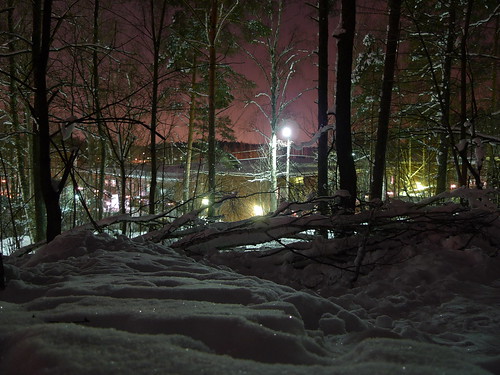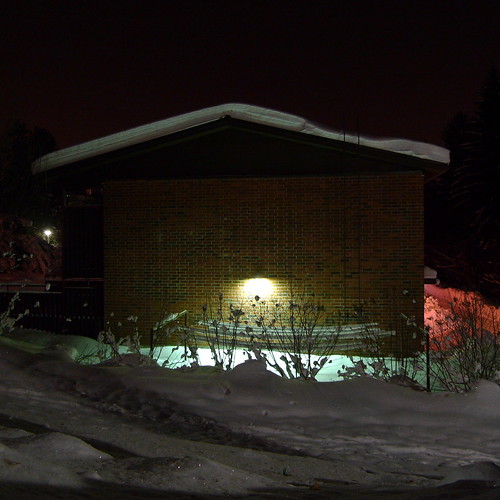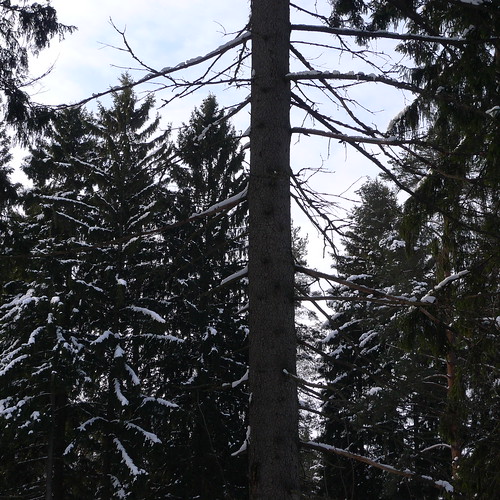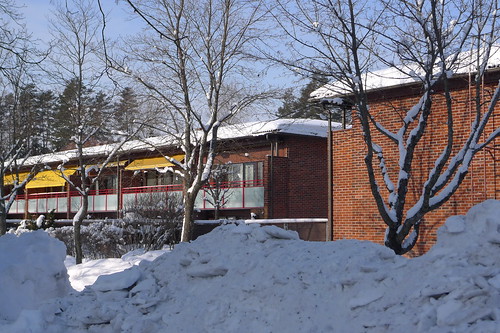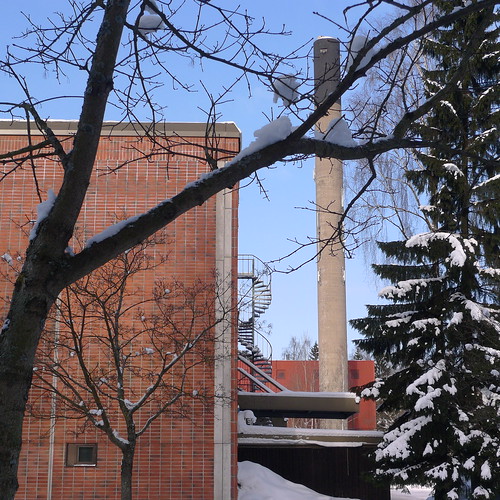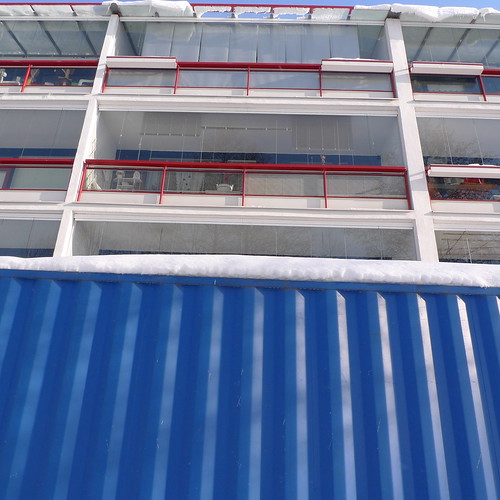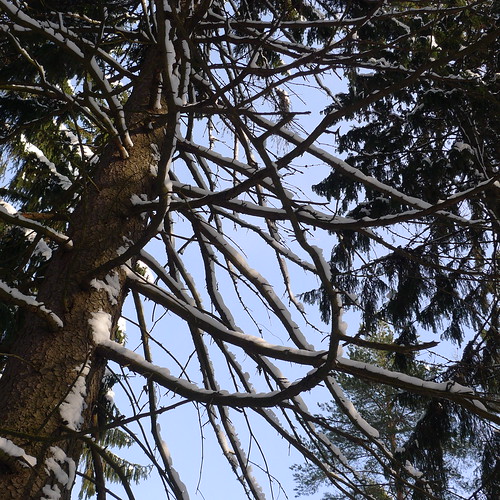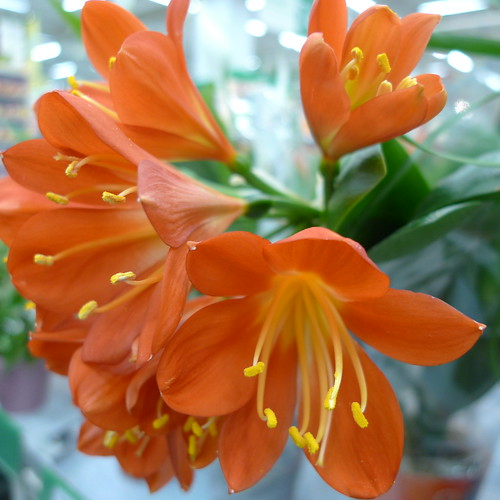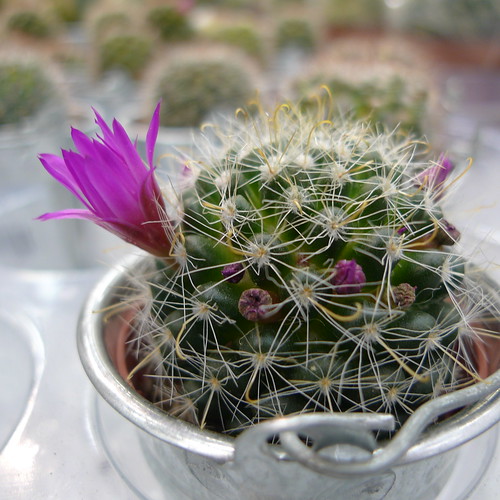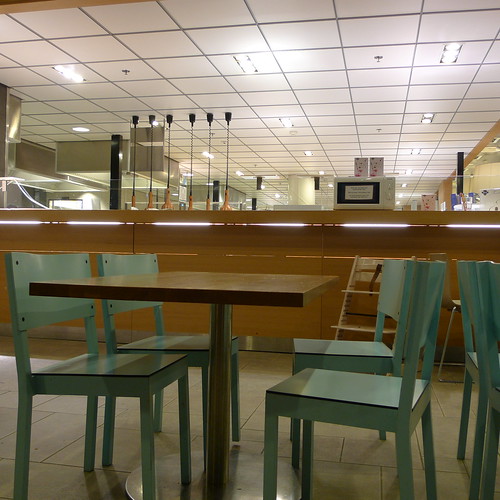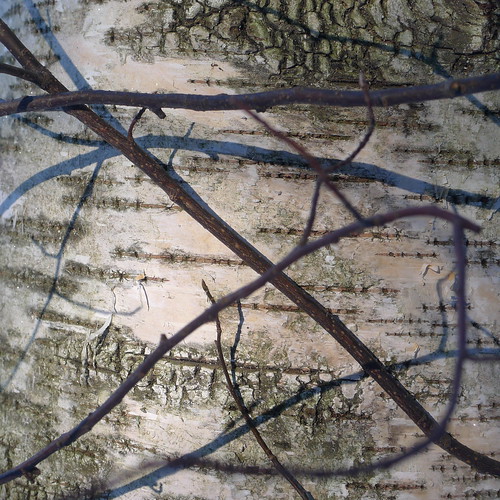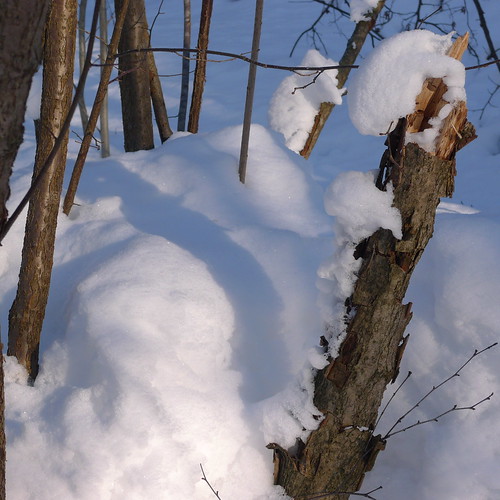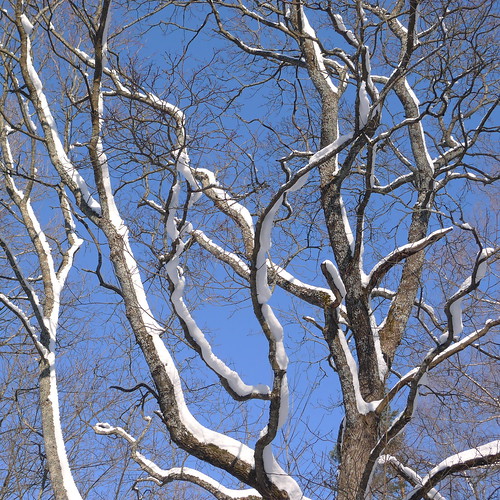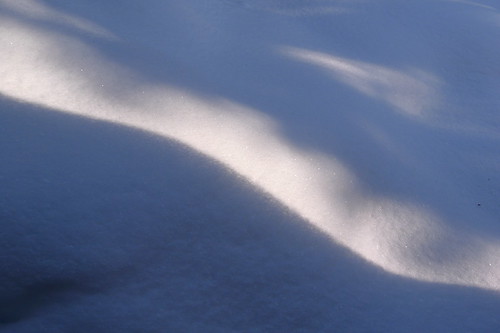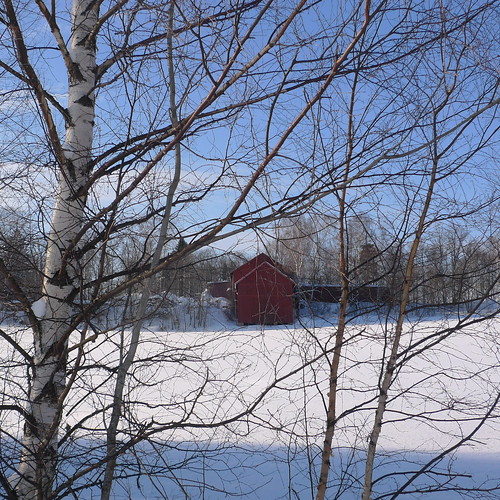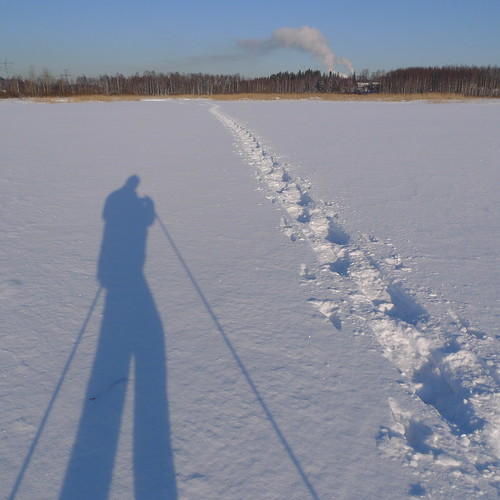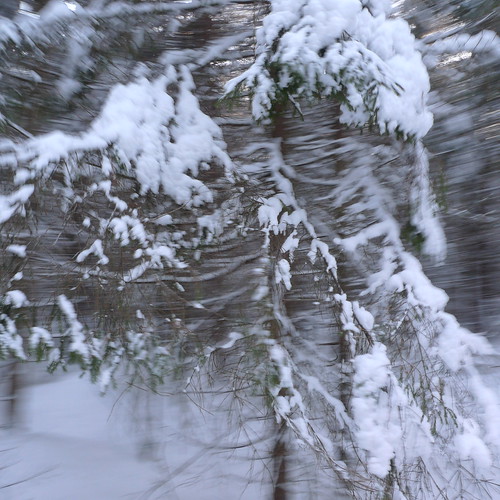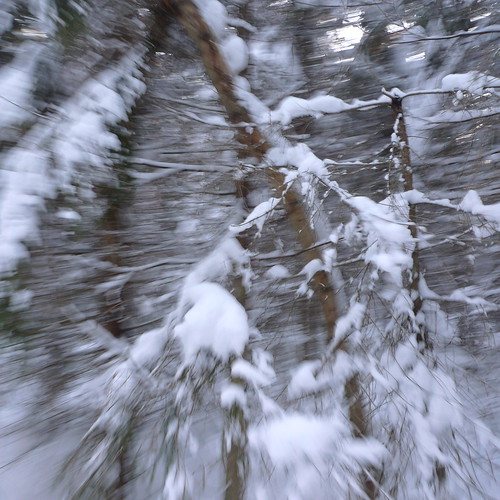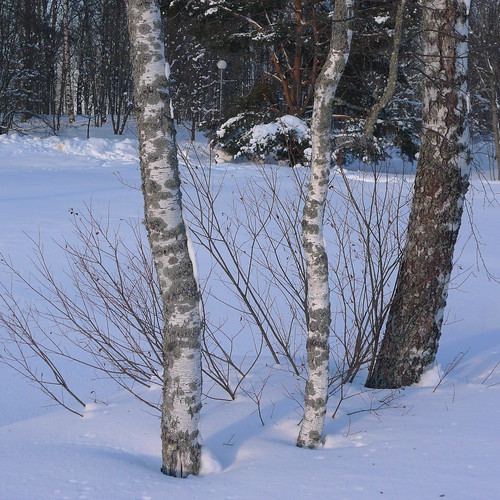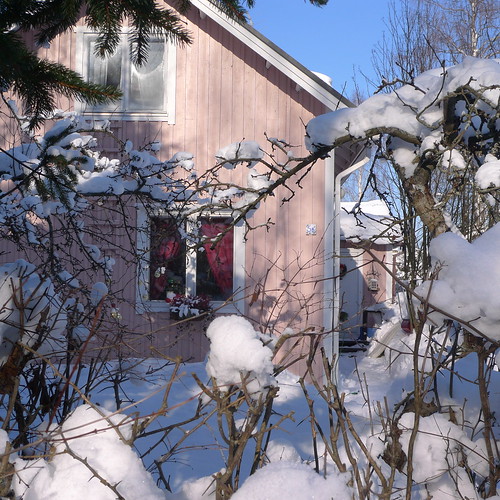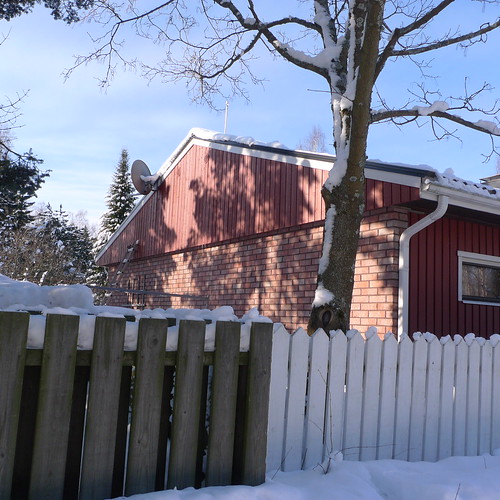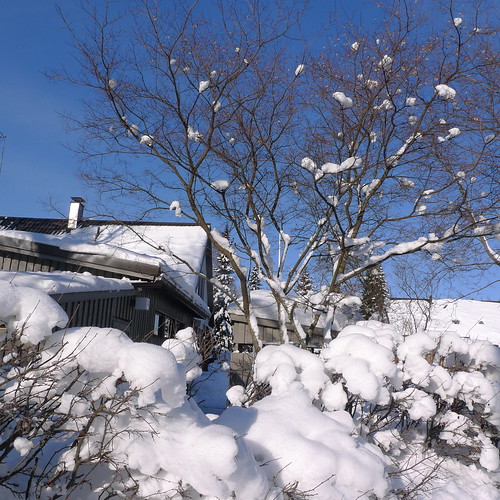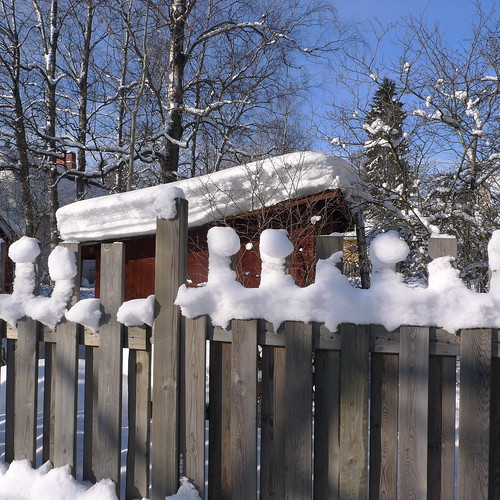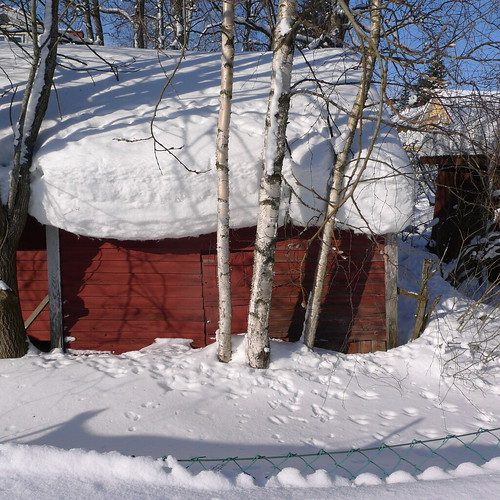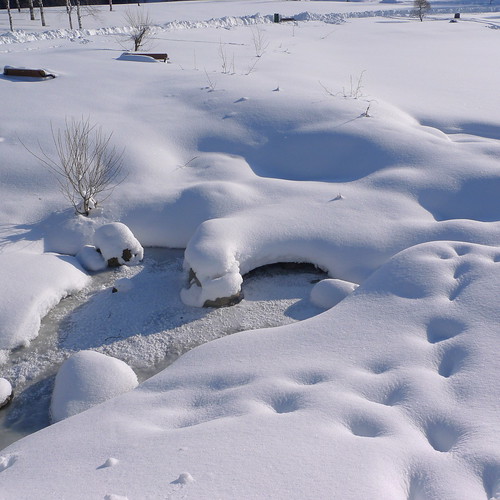Paul Indigo asked an interesting question, "What makes a real photographer?", and tried to give an answer at his blog with a list of 11 items, starting with the requirement that a real photographer "produces work that is interesting and significantly different which gets him or her noticed", and ending with "succeeds in creating fantastic images again and again".
I evaluated myself on the 11 points, giving 0 or 1 as the grade, and came up with the grade of 1 out of 11. The only one I felt applied to me was "is driven to make images", and that does apply to quite a degree. In all else I fail miserably.
It is such a nice feeling to not to be a real photographer. Namely, if one were, there would be such a pressure to perform. What would happen is that instead of you owning things, the things (and ideas and so on) would own you.
Being a photographer is quite ok, if you avoid the situation where being a photographer ends up defining you. Then you are owned by those words.
I'm happy in my way of non-ownership. This is one aspect of zen which I really, really like: not define yourself by things and by accomplishments - which end up owning you. Instead, one aims for the gradual recognition of the dangerous things which have their hook on you. And sometimes one may even escape one of such traps.
Another thing: there will be a pause of a few days in the postings, which suits the idea of not being a real photographer here.
Sunday, February 27, 2011
I'm not a real photographer
Saturday, February 26, 2011
Friday, February 25, 2011
Architectural
My primary interest in taking photographs is the landscape, but also architecture has some interesting aspects. Here are two photographs taken in the library building at Myyrmäki. There was an exhibition of photographs in the lobby, which caught my interest, mainly because I'm pondering what to do with the prints.
At least I got a bit organized, buying a folder which can hold a dozen (maybe two dozen) 30 x 30 cm prints. And I also bought some material to be used in the framing, but I'm not yet sure whether it will work.
Framing and mounting prints
The weather is warming up, and there are clouds so it is less sunny, but after a long period of cold this is a welcome change. I went once again skiing, and it was good to be out there. Cross-country skiing is such an excellent sport, and you feel you could go on and on and on...
But I'm a bit worried also, about the prints. So it goes: you get interested in something - such as having prints made of your photographs - and then you find out you need to solve all kinds of new problems. It would have been so much easier just to leave the photographs to the digital realm...
Here you see some of the prints I had made:
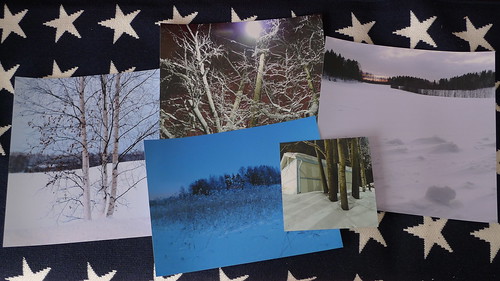
Now that I have some prints, I need to think about how to hang them on the wall. Something simple would be good - I'm not aiming for eternity here, only a few moments of potential enjoyment. Well, have to think about this a bit to avoid getting into new complications.
Thursday, February 24, 2011
Making prints of your own photographs
I bought a print from the Cramer sale organized by TOP, after which there arose some discussion of making prints of one's own photographs. I got interested in this, and ordered some prints (family portraits and landscape photographs) from the Finnish company Fotonetti, using their "pro" version of the service.
The paper used in the prints is Fujicolor DP II Professional, which proved to be good for my purposes - also the landscape photographs - even though the paper is actually intended for professional portrait prints.
I selected half a dozen landscape photographs taken during the last two months, some of which were very light and some dark. Some were taken in daytime using ISO 100, and some at night using ISO 400. The biggest size of the prints were 30 x 30 cm; some were 15 x 15 cm; a couple were non-square.
I was quite pleased with the results, and will probably hang one or two on the wall, maybe in my office at work. What was remarkable was how little (none, in fact) of noise was visible even in the 30 x 30 cm prints of the ISO 400 photographs. And I didn't do any tricks at all, all images were jpegs straight from the camera.
Next time I may experiment a bit with different settings of the color profiles etc., but even this "automatic" workflow worked well for me. I'm not sure how much of the results was due to the "pro" version of the service, which was a bit more expensive, but still, the price was reasonable given the good results.
Wednesday, February 23, 2011
Developing taste, part 2
There was a followup-posting at the 1/125 blog on the topic of literary vs. unliterary photography, which I brought up hastily yesterday. The issue is not simply good vs. bad, here is a quite from 1/125:
“Literary” does not simply mean “better” — it denotes something more specific and less value-laden: it means you have to really read it, and that reading it is rewarding. An “unliterary” work is not necessarily bad, but it does not require or reward deep scrutiny. What you need from it you can get casually, without effort or preparation.I must say I'm still confused although this did clear up the topic a little bit. But I still see here a kind of "expert" arising, those who have the "right" taste. And I don't see this direction at all interesting. What I suggest instead is developing awareness - not of photography, but of the world. Otherwise you end up with a highly civilized dead end of photography.
Tuesday, February 22, 2011
Developing taste
The blog A Photo Editor pointed to the 1/125 blog of Nick Shere, on the topic of "why we love bad photography".
In these two blogs there arise a division of photography into two: good photography and bad photography. This is social construction of reality in practice!
Nick Shere writes: 'In photography, the situation is somewhat more dire, because it is much, much harder for viewers to move freely between the “unliterary” photographic realm and the “literary” photographic realm. There is hardly any middle ground between them, the way there is with books.'
But is there such a thing as developing your taste? Going to galleries, looking at the Art of price-winning photographers? What is "taste" after all?
In other words, where is (or is there) the "priesthood" of photography, those whose theories (and thus, social construction of reality) determine the good and the bad?
I have read my share of literature, all genres from fantasy and detective stories to really, really serious non-fiction, and all genres have their masters. Some can write, some don't, but many of those who can write will never get a Nobel prize for all their skill. Some pulp writers write very, very well indeed.
Also, I have my favorite photographers, of which some are well know, for example Sam Abell, but some are known by only a handful of people. For example, I would imagine that only a few hundred, or maybe a few thousand people know of the excellent work of photography bloggers such as Markus Spring, Andreas Manessinger, Paul Lester, Mark Hobson, and Cedric Canard.
And thus: where is the authority to say what is good and what is bad?
9 hours 47 minutes
The length of day is now a respectable 9 hours 47 minutes, four hours longer than at the shortest in December. This is really good, coming out of the darkness. Here are five photographs taken today, while going for a walk.
Details vs. landscape
Paul Maxim had an interesting posting about Place, reflecting on an earlier "Rosebud-posting" by Mark Hobson, which is also worth reading.
While pondering this I realized I had taken yesterday some colorful, "detail" photographs. Here you are. Waiting for spring - which seems still to be a long way away.
Monday, February 21, 2011
No masters (in Caucasus)
I have been reading a book about the Caucasus, written in 2009 by the Yle reporter Anna-Leena Lauren. It is a book about war, about inequality, about corruption, but also about hope, and about human beings as equals. The name of the book is loosely translated as "there are no masters in the mountains" (in Finnish, Vuorilla ei ole herroja), meaning that all men are equal.
The Caucasus is a region which doesn't seem to have much hope, but even there human beings manage to sustain their humanity. The book contained some photographs, not professional quality but hasty snapshots taken by a reporter, but they were the more authentic for it. It is interesting that a region which has such a great natural beauty - mountains like the Alps, great beaches - is spoiled by the power struggle going on.
Anyway, here are some photographs of the Finnish winter. A sunny day, once again.
Sunday, February 20, 2011
Tapio Rautavaara - and the social construction of reality
Here are six sunny photographs. I went skiing today. An excellent day for skiing, as the temperature rose to -11 °C during afternoon. During nights we have had -25 °C or even colder.
I have been listening to the music of Tapio Rautavaara (1915-1979), a Finnish singer and movie actor. He was also quite an athlete, and became the Olympic Champion in the javelin at the 1948 Summer Olympics in London. And not only that, he also got the gold medal in the Finnish team in the archery World Championships of 1958.
But coming back to the discussion about happiness - was Rautavaara happy? I don't know, but I think it doesn't matter much. He was doing things, and that is what matters. And his music, although it is dated and "traditional", still lives on.
By the way, Cedric Canard wrote well about the topic of happiness in connection with photography.
But how to think about life (or photography) if happiness is not anything to aim for?
I have been reading the book The Social Construction of Reality, written by Peter L. Berger and Thomas Luckmann in 1966. I must admit that I have been rather critical of sociology; maybe that is a natural trait in anyone who has studied physics. However, this book was good, and not only that, it was clearly written and based on real-life empirical approach and observations. So, I need to change my opinion about sociology: all of it is not postmodernistic word-games, some of it is relevant to the world and to life.
The recent upheavals in the Arabic world serve as an excellent illustration of the topics in the book. When the social structures and institutions lose their role and become irrelevant, a great deal of stress is put on the people.
We humans are different from other species because of our undeveloped instincts: we are adaptable to different environments. But to compensate our instinct handicap, we need routines to cope with out daily life. Otherwise we get very, very stressed.
"There are a thousand ways to build a canoe." To cope with the abundant choices, we need to select one approach, and work with that. Routines save us from anarchy.
I feel this applies also to photography. I have developed an almost instictive approach in using the Panasonic LX3. This helps to reduce stress, to such a degree that something quite complicated - taking a photograph - becomes a way of reducing stress from other areas of life.
Routines make creativity possible. One can submerge oneself in the taking of photographs.
One more observation based on thoughts from the book. I feel there are several very different "worlds" of photography. One such is the world of galleries and Art. Another is the world of taking photographs in your daily life to have something interesting to do, and to learn a little bit of what the world is like and what you are like in relation to the world.
I don't think these two worlds of photography overlap at all. Better be silent, then?
Saturday, February 19, 2011
Precious sunshine - and gardens in winter
Today was a cold, sunny day, the sunlight so bright it hurt the eyes. Wife and I went for a walk at noon, and it was wonderful out there. Here are photographs taken during the walk, theme being "gardens in winter".
